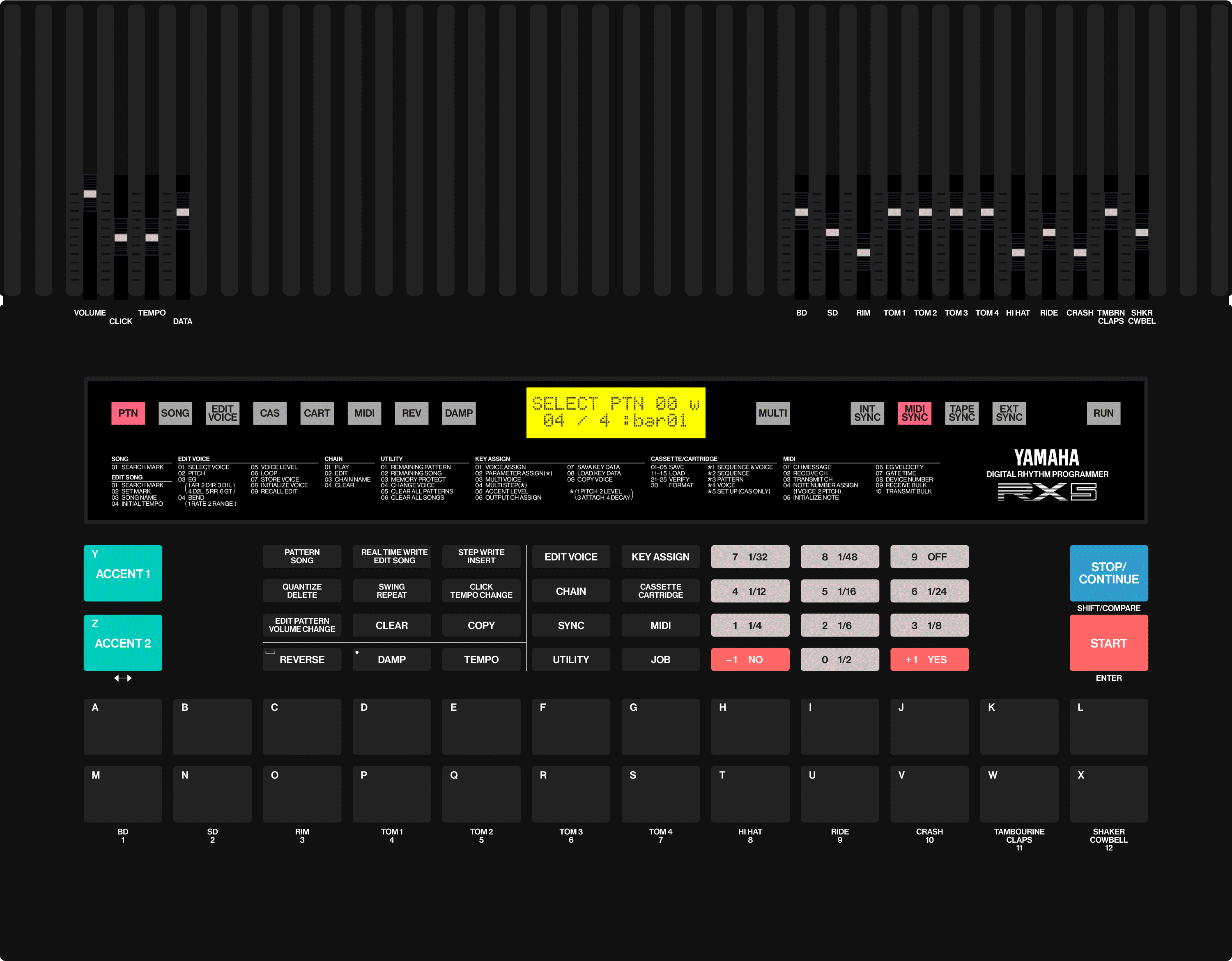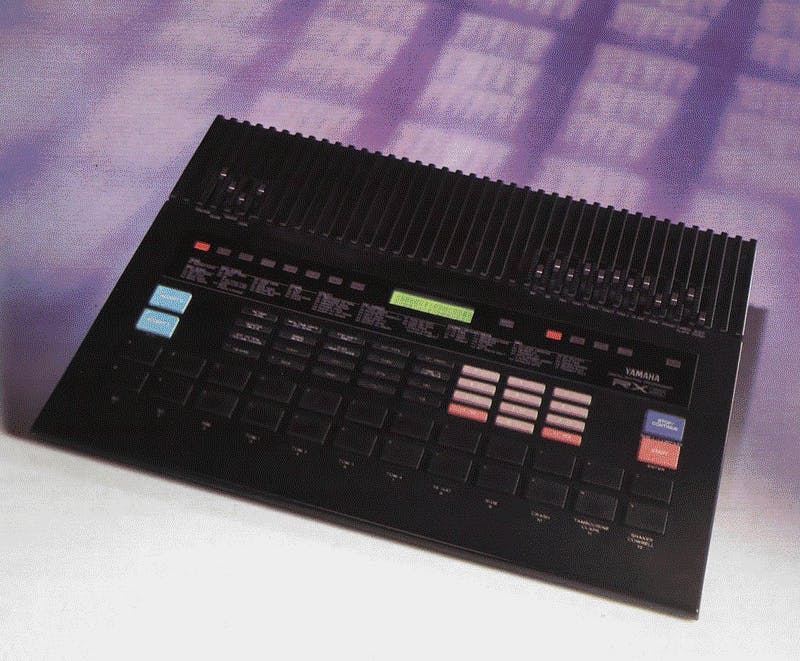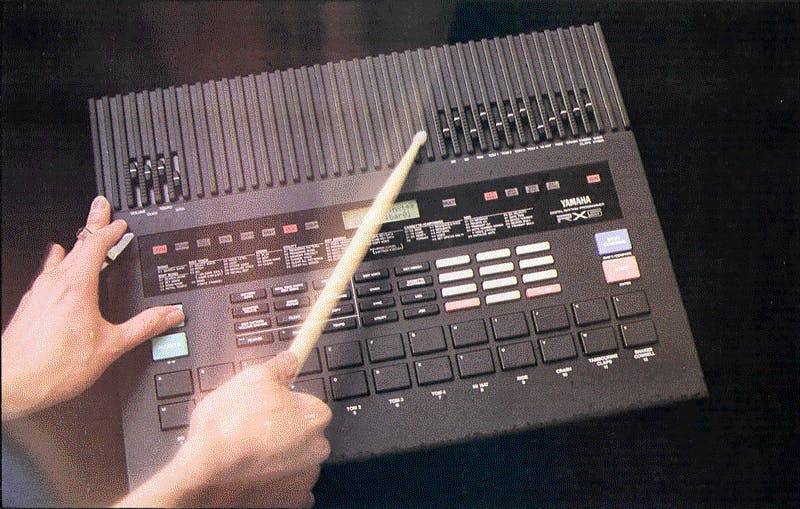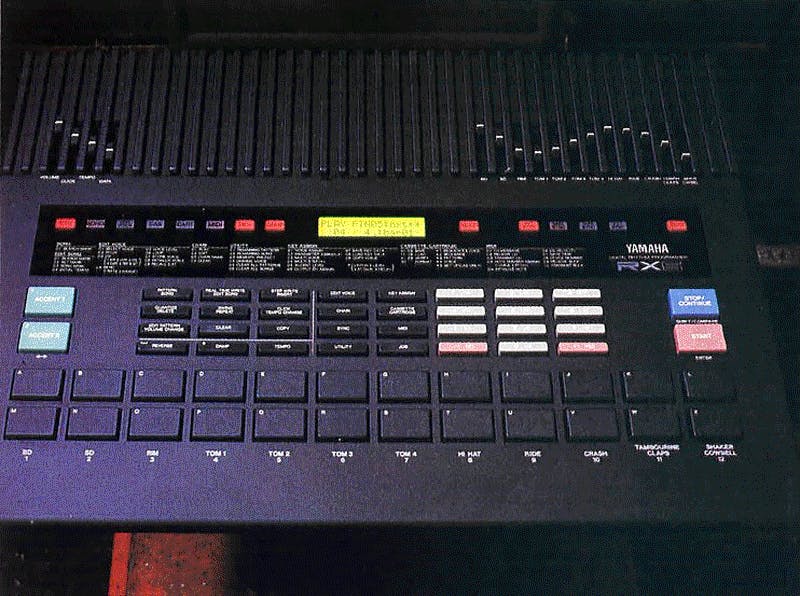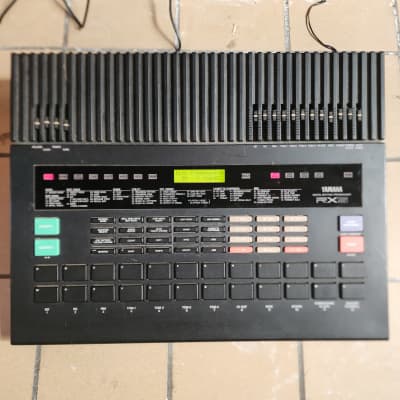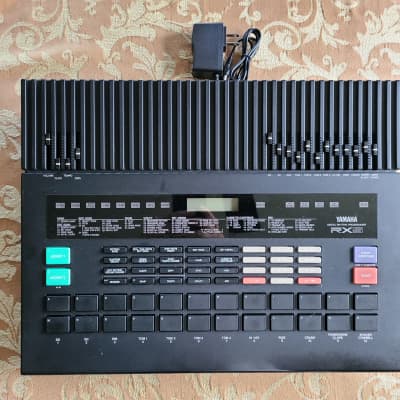1986 (Dec.)
Initially sold for ¥147,000
State-of-the-art 80s drum machine: powerful and flexible, it's worth to be considered among the top class of hardware together with Roland's 909 and 808.
24 internal voices, expandable using ROM cartridges made both by Yamaha and third parties. Volume, envelope and pitch for each voice can be edited, not only system-wide but also per note event in each pattern. While it does miss more live-oriented controls as found on Roland machines, the amount of detailing that can be done through pattern building is impressive.
Some editing functions are easily accessible via direct buttons, other requires exploring sub-menu systems Yamaha calls jobs. Thankfully a summary of all the hidden settings is available below the LCD. Input for these is done either through +1/-1 buttons or through a data slider, a very small and not so precise one: a wheel as found on the QX5fd would have been perfect for the job.
It also features separate outputs and volume sliders for each couple of voice stack. Plus you get two accent levels and the ability to quickly reverse a voice.
The keys are precise, with a satisfying click and an optimal travel distance that make playing live and editing setings a pleasure for the fingers. It's all plastic, but the different textures used are much better compared to the early RX11/RX15 models.
The demo below showcases an interesting technique of glitching sounds that can be achieved by linking and swapping sounds using external cartridges. Yamaha originally released a set of optional cartridges containing extra waveforms: WRC02, WRC03 and WRC04. Thanks to custom made cartridges, today it's also possible to sample your own sounds to use them on the RX5. All for a fraction of the cost of a Roland.
Features
- Edit your rhythm patterns by modifying the pitch, envelope, level, and sound of each individual drum stroke.
- Create your own "drum set" by choosing 24 of the RX5's 64 voices and finely tailoring their sound. 3 different drum sets can be memorized.
- Assign a single voice to 12 keys, to create a pitched "drum keyboard".
- Reverse any voice to create impressive, contemporary sound. Execute realistic cymbal muting by using the Damp function.
- Insert gradual tempo and volume changes in songs. Name any part of a song and locate it instantly.
- Expanded memory capacity: 100 patterns, 20 songs and 3 song chains, which can be saved onto RAM cartridge or cassette.
- Voices can be output via 12 individual output channels, allowing you to use signal processing or individual drums.
- Record or receive Tape Sync signals.
- Use any RX5 voice as the sound source for any MIDI keyboard.
